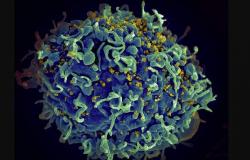Marcelo Camargo/Agência Brasil
Is it possible to predict whether we will have Alzheimer’s disease?
One of the most frequently asked questions in medical offices of specialists in brain diseases and mental health is the following: Doctor, my grandfather and my father had Alzheimer’s disease, will I have it too? Is there any test I can do to find out?
There is a reason why this concern has increased a lot in recent decades and it is related to the increase in the population’s life expectancy. It is well known that with each decade of life after the age of 60, the incidence of dementia increases progressively. Around 70% of dementia cases are caused by Alzheimer’s disease.
Close to 5% of the population aged 65 suffers from Alzheimer’s Disease (AD) and every 5 years this risk doubles. One in every two people over 90 years of age has AD, such a high incidence shows that extreme longevity may not be so advantageous. There are between 50 and 60 million people with Alzheimer’s disease in the world and around 2 million in Brazil.
The World Health Organization estimates that in 2050 there will be 153 million people with AD in the world, 6 million of whom will be Brazilians. In recent years, some “biomarkers” have been developed to detect Alzheimer’s disease.
There are two characteristic pathological changes in the brains of people with AD, the accumulation of beta-amyloid protein plaques and the neurofibrillary accumulations of tau protein.
These changes can be measured through a highly specialized exam called positron emission tomography (Pet-Scan) and also by measuring these proteins in the cerebrospinal fluid.
Unfortunately, the first method is very expensive and is not used in everyday clinical practice, while the second depends on an invasive examination such as the extraction of cerebrospinal fluid.
In such a way that the measurement of these substances or biomarkers began to be carried out in the blood through a test called PrecivityAD2.
This test determines the possibility of having amyloid plaques in the brain, which certainly helps in the diagnosis of patients who already have symptoms of cognitive decline.
The test is not recommended for people who do not have any symptoms or are under the age of 55, because it has not yet been studied in this group of people.
Recently, a study led by Dr. Jianping Jin from Capital Medical University in Beijing-China monitored these biomarkers for Alzheimer’s disease for 20 years.
The study published in February this year in the New England Journal of Medicine followed a group of 648 patients who developed Alzheimer’s disease and another group with the same number of people who did not develop the disease.
Monitoring was carried out by measuring beta-amyloid42 (BA42) and beta-amyloid40 (BA40), tau181 protein and light chain neurofilaments in the cerebrospinal fluid, in addition to clinical evaluations and brain imaging exams.
These exams were carried out every 2 or 3 years in both groups.
They found that BA42 protein levels began to increase in the group that developed Alzheimer’s 18 years earlier than the group that remained disease-free.
The BA42/BA40 ratio began to diverge between the two groups 14 years before the development of Alzheimer’s symptoms.
The level of tau181 protein begins to increase 11 years before the appearance of cognitive symptoms and the increase in light chain filament protein 9 years before.
Cognitive tests began to show differences between the two groups 6 years before diagnostic confirmation.
This means that in the future, the standardization of these biomarkers may be useful for the anticipated or early diagnosis of Alzheimer’s disease, especially if it is confirmed that these changes in the cerebrospinal fluid are also repeated in the blood.
We also know that there is a genetic predisposition in the development of AD, with the Apolipoprotein 4 (Apoe4) gene being the main gene associated with this disease, but many carriers of this gene do not develop the disease.
In Dr. Jianping’s study, only 37% of the AD group had this gene while in the group of normal patients it was present in 20% of cases.
Furthermore, there are around 500 families with genetic Alzheimer’s disease worldwide, in which AD occurs very frequently in all generations.
The department of Antioquia in Colombia has one of the best known genetic Alzheimer’s Disease mutations with 25 families involved.
The mutation occurs on chromosome 14 and has been extensively studied and described by the famous neuroscientist Dr. Francisco Lopera, it is the famous “paisa mutation”.
Assuming we can predict who will develop Alzheimer’s, what does medicine have to offer at the moment to try to prevent the onset of the disease? In terms of medication, absolutely nothing.
This advance knowledge could bring more problems than solutions, but we must not forget that there are at least a dozen modifiable factors that accelerate the appearance of AD symptoms and it is precisely in this direction that we must focus our efforts, whether or not we have a genetic risk for developing AD. illness.
These factors are physical inactivity (sedentary lifestyle), high blood pressure, obesity, diabetes mellitus, smoking, depression, low educational level, lack of cognitive activities especially reading, hearing loss and social isolation.
Everything that can be done to combat these ten factors will certainly help reduce the risk of suffering from this tragic illness called Alzheimer’s Disease.
Remembering that people who dedicate themselves with discipline to physical activity, in addition to ending a sedentary lifestyle, generally completely change their lifestyle: they improve their diet, stop smoking, sleep more, drink less alcohol.
Physical activity helps control your blood pressure and glycemic levels, improves your mental state and mood and generally has a renewed social life with your sports colleagues.
Ending a sedentary lifestyle is essential if we want to preserve our cognitive functions and have good mental health.
Enable notifications
Disable notifications
Tags: predict Alzheimers disease
--





